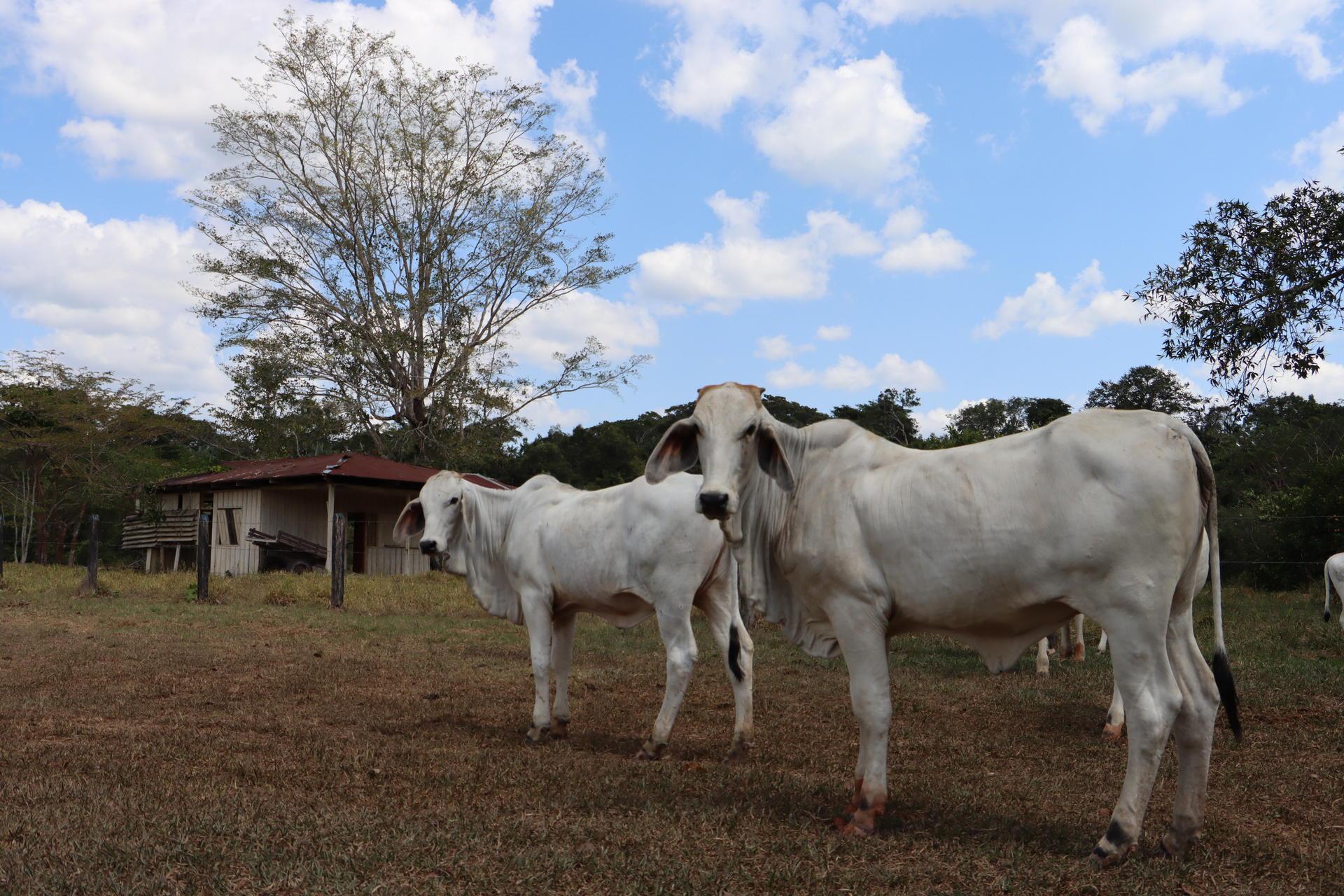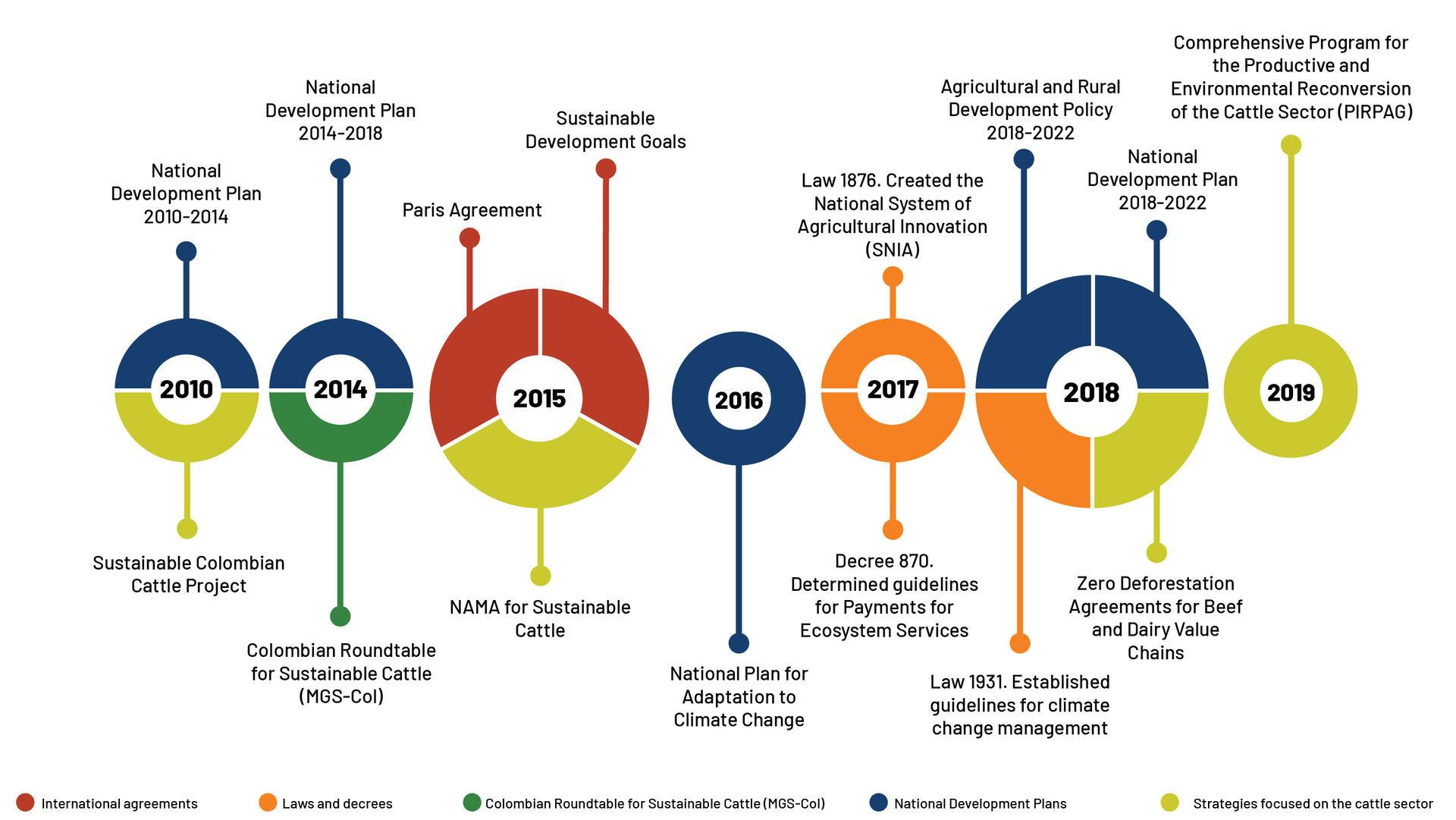Research Articles The Kaleidoscope of Change: consolidating the sustainable cattle policy in Colombia

By Manuel Francisco Díaz and Stefan Burkart
A recently published paper addresses Colombia's 'Policy for Sustainable Cattle' using the Kaleidoscope Model of Policy Change, considering its progress, challenges and stakeholders working towards a more sustainable cattle sector.
Climate change and deforestation are leaving an clear mark on our planet, and cattle is not exempt from this reality. Responsible for a significant percentage of greenhouse gas emissions and biodiversity loss, cattle farming faces a crossroads: to change, or to risk irreversibly damaging our environment.
In Colombia, a new approach to cattle farming is taking shape. The 'Policy for Sustainable Cattle (PSC) 2022–2050' is a beacon of hope in the face of huge environmental concerns. With global temperatures on the rise and cattle farming as a co-driver of deforestation, the need for sustainable policies is more urgent than ever. This policy, designed to promote the transition from mainstream cattle farming to sustainable production systems and value chains, is a milestone on the path toward a greener and more prosperous future for Colombia.
However, there are basic questions whose answers could pave the way for new and more effective sustainability policies: How did this policy emerge in the national landscape? Who were the drivers of this initiative? And, most importantly, what challenges were faced during the consolidation process? With these questions in mind, the Alliance's Tropical Forages Program published a study titled 'A kaleidoscope model analysis of the policy for sustainable cattle 2022-2050', recently published in the prestigious journal Cleaner and Circular Bioeconomy, aiming to unravel the step-by-step process of consolidating this national policy. To do this, we conducted interviews with national stakeholders in the cattle sector.
To analyze the policy in detail, published under Resolution 126 of 2022 by the Colombian Ministry of Agriculture and Rural Development (MADR), the Kaleidoscope Model for Policy Change (KMPC) developed by Resnick et al. was applied. In this model, multiple pieces come together to form constantly changing and evolving patterns. The consolidation of sustainability policies is the result of dynamic interaction among various actors, common interests, and processes. Just as a triangular prism reveals a variety of colors and shapes when turned, our analysis unraveled the multiple dimensions and perspectives that shape the process of political change toward sustainability in the Colombian cattle sector. Our main findings were:
The creation of the PSC was not a trivial process. It was the result of years of research, discussions, and commitments among diverse public and private actors. From acknowledging the problem to identifying solutions, each stage of the process was marked by collaboration and commitment to a more sustainable future.

Key advances made prior to the Colombian Policy for Sustainable Cattle 2022–2050.
One of this policy's notable strengths is its multifaceted support. From civil society organizations to government agencies, all have joined forces to make this vision of more sustainable cattle farming a reality. The Colombian Roundtable for Sustainable Cattle (MGS-Col), MADR, and the Ministry of Environment and Sustainable Development (MADS) are just two of the key players.
However, the path to sustainability also faces several challenges: The lack of budget for implementation, limited institutional capacity, and the diverse impacts and nuances that accompany a government change are obstacles that must be addressed to ensure the long-term success of this policy. Despite these challenges, the commitment of policy drivers, such as the MGS-Col, remains a beacon of hope amid uncertainty.
Looking to the Future
As Colombia moves toward a more sustainable future, the PSC will play a crucial role in shaping our tomorrow. With a renewed focus on environmental protection, social equity, and economic development, this policy offers an inspiring vision of what is possible when we work together toward a common goal. Despite these challenges, there is a clear sense of optimism and determination in Colombia. The implementation of this policy will not only benefit the environment, but also provide opportunities for economic growth and social inclusion.
In summary, the emergence of the PSC is the result of years of discussions, research, and collaboration between diverse actors. From environmental organizations to cattle farmers, everyone has played a role in its development. This policy represents a step forward in Colombia's commitment to sustainability. As the country moves toward a brighter and more balanced future, it is important to maintain momentum and work together to overcome the challenges that arise along the way.
Further reading: How do sustainability policies emerge in the Colombian political system? A Kaleidoscope Model Analysis of the Policy for Sustainable Cattle 2022–2050
*Manuel Francisco Díaz is PhD student in International Agricultural Policy and Environmental Governance at the University of Kassel.
Stefan Burkart is a Senior Scientist at the Tropical Forages Program of the Alliance of Bioversity International and CIAT.
Edited by José Luis Urrea-Benítez, Senior Communications Analyst of the Tropical Forages Program at the Alliance of Bioversity International and CIAT. Cover Photo: JL Urrea/CIAT
